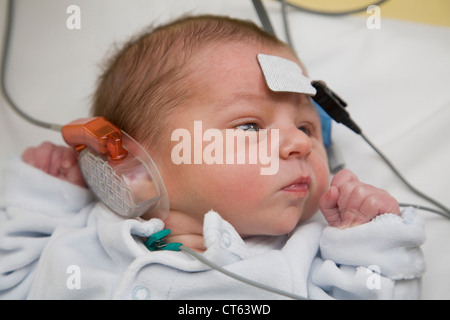
#Auditory sensitivity in babies how to#
The development team will work with government ministries to explore how to make the product eligible for coverage and financially accessible to any family that could benefit from it. Children who are hypersensitive may complain about sensory. Noises will pose less of a barrier to their participation in school and recreational activities, which should boost their educational and social outcomes. The auditory sensitivity of 37 participants who stutter and 44 participants who do not stutter, ages between 8 and 19 yr, assigned to three age categories, were obtained in five listening conditions: Pure tone threshold, simultaneous masking, backward masking, notched backward masking, and simple dichotic (simultaneous) masking. Hypersensitivity refers to having an extreme sensitivity to stimulation of the senses, i.e., touch, sight, hearing, taste, and smell. Once the device is ready for commercialization, it will help kids with ASD to feel more comfortable in their daily lives. Build up tolerance slowly using sound-cancelling devices. As the developers work toward a final product, they will test prototypes in real classrooms and gather feedback from families, teachers and experts. Allow the child to cover his ears if this helps him, or use noise-cancelling headphones. The device is currently at the proof-of-concept stage. Your baby can rest or sleep during both tests.

A programmable smartwatch will filter the soundscape as needed and send a tolerable version of it into these earphones. Two different tests are used to screen for hearing loss in babies. Kids will wear earphones to isolate themselves from the immediate sound environment. For example, dogs barking, sirens, and jackhammers, but not other sounds, such as the teacher’s voice. With support from KBHN, researchers are developing a device that will selectively filter out whatever specific noises the user does not want to hear.
#Auditory sensitivity in babies full#
Because such strategies block or avoid all sounds indiscriminately, they tend to interfere with the child’s full participation in class and other activities.

Schools’ approaches for accommodating sound sensitivity include letting students wear earplugs or earmuffs or allowing them to leave to take breaks in a quiet area. This distress causes them to react with behaviours such as covering their ears, yelling or screaming or running out of the room to avoid the sound. The purported relation between general auditory sensitivity and lexical tone sensitivity was later examined among Cantonese children by means of structural equation modeling (Zhang and McBride. When children are exposed to these sounds, they may be very distressed.

Many children living with autism spectrum disorder (ASD) are hypersensitive to certain sounds. KBHN – Early Career Investigator & Mentorship Awards.Policy Advisory Research Training Committee.


 0 kommentar(er)
0 kommentar(er)
